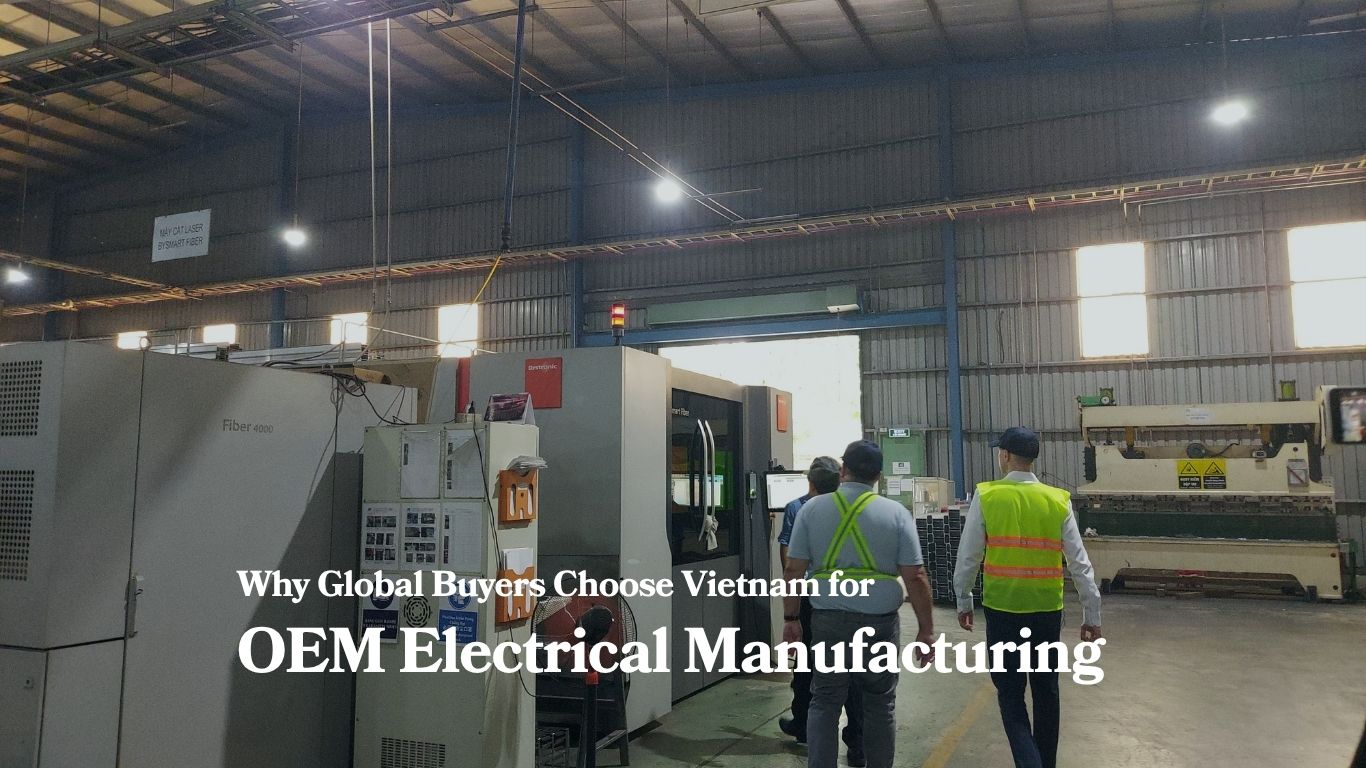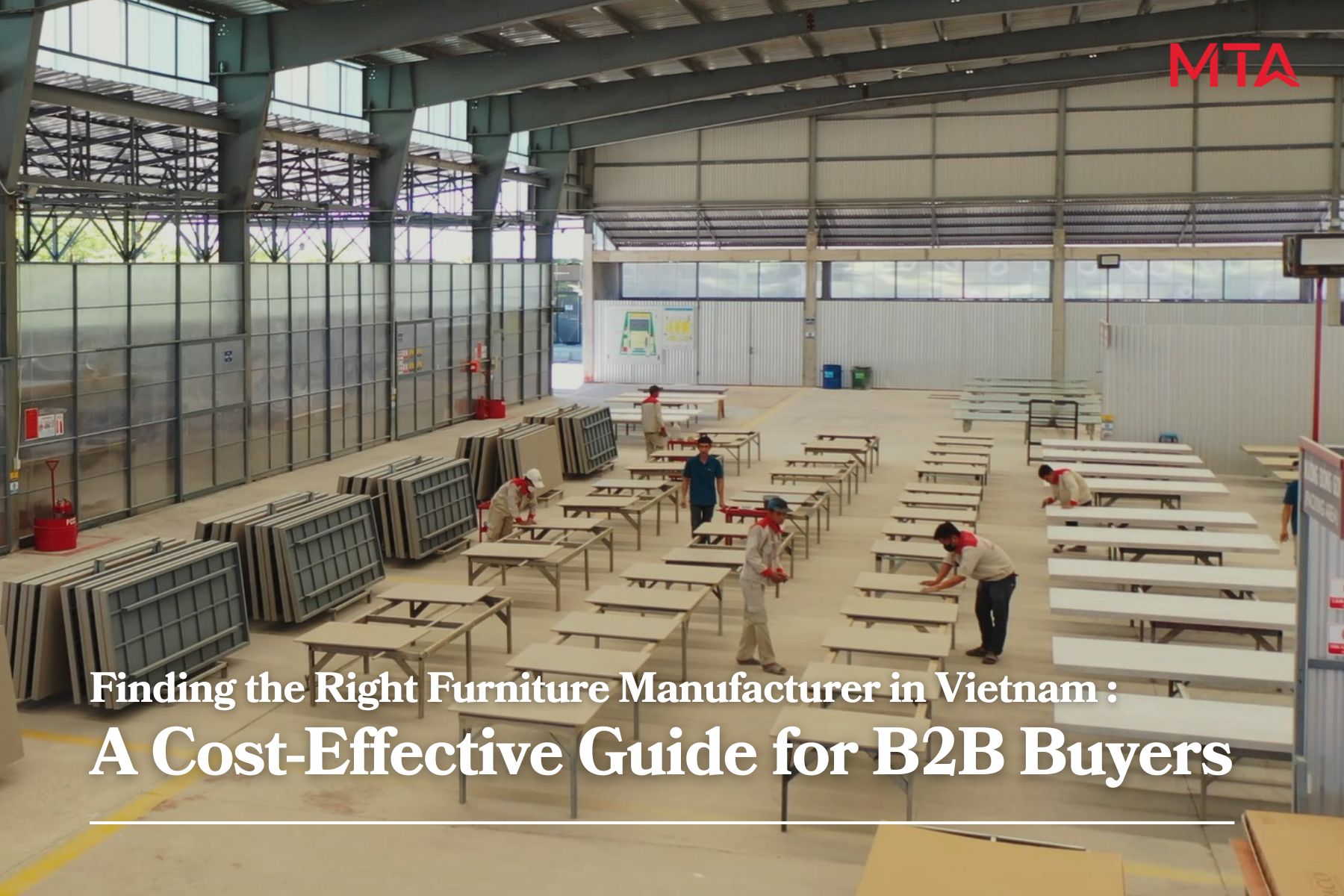The US tariffs 2025 have led to higher import prices, creating significant challenges for international buyers in planning and maintaining their supply chains. Products such as electronics, textiles, furniture, and other key goods are directly affected, increasing landed costs and reducing buyers’ profit margins. In this context, finding alternative sourcing options has become essential. This article will introduce practical strategies to help international buyers minimize the impact of tariffs, optimize costs, and manage risks in their sourcing operations.
Understanding the US Tariff Challenges
The US tariffs 2025 have introduced higher duties across a wide range of goods, increasing the total cost for American importers. Electronics, textiles, furniture, and other consumer goods from China now face tariffs averaging 30%, while Vietnam experiences an average reciprocal tariff of 20% for similar products. In comparison, Thailand and Malaysia face tariffs close to Vietnam at around 19%, Myanmar and Laos are hit harder with rates reaching up to 40%, and Singapore enjoys a much lower rate at approximately 10%.
For international buyers, these changes directly impact costs and sourcing strategies. Higher tariffs increase import prices, affecting profit margins and market competitiveness. Buyers may need to negotiate discounts with suppliers, adjust order volumes, or seek alternative sourcing from countries with lower tariff exposure. Navigating this complex environment requires a clear understanding of reciprocal tariffs and how they influence international trade flows.
The video below provides a detailed look at the latest U.S. tariff measures, their impact on sourcing from Vietnam, and the potential opportunities that can help international buyers adapt to this evolving trade landscape.
Why Vietnam Has the Advantage in Sourcing
Despite these challenges, Vietnam is well-positioned to capitalize on the evolving trade scenario:
- Competitive labor costs: Vietnam offers lower labor costs than China, making it suitable for medium and large-scale production without sacrificing quality.
- Favorable trade agreements: Free trade agreements such as EVFTA and CPTPP open doors to the EU, Japan, South Korea, and other markets, reducing the dependency on U.S. demand and mitigating tariff impacts.
- Flexible logistics: Modern ports like Cai Mep–Thi Vai, upgraded highways, and efficient warehousing systems shorten delivery times and reduce transportation costs, allowing exporters to remain competitive.
- Quality and certifications: Achieving international certifications such as ISO, FSC, and PEFC enhances credibility with global buyers and ensures compliance with sustainability and safety standards.
These advantages make sourcing from Vietnam an attractive option for global buyers looking to reduce risk while maintaining efficiency and quality.
Practical Sourcing Strategies for International Buyers in Vietnam
To navigate the US tariffs 2025 effectively, buyers sourcing from Vietnam can adopt practical strategies:
- Negotiate directly with Vietnamese factories: Buyers can negotiate better pricing, volume discounts, or payment terms directly with Vietnamese manufacturers to offset the impact of higher tariffs.
- Leverage Vietnam’s FTAs: Take advantage of exporting Vietnamese products to markets with lower or zero tariffs under free trade agreements before shipping to the US, when applicable.
- Focus on products with lower tariffs: Prioritize Vietnamese products that face lower US tariffs or benefit from trade agreements, helping to reduce overall import costs.
- Source from multiple Vietnamese factories: Split orders across several Vietnamese factories to ensure supply security, improve negotiating power, and reduce the risk of relying on a single supplier.
- Enhance product value with certifications: Improve product quality, obtain international certifications (ISO, FSC, PEFC), or bundle products to increase value and mitigate the impact of tariff increases.
By combining strategic sourcing, logistics efficiency, and reliable supplier partnerships, international buyers can reduce risk, control costs, and secure high-quality supply chains from Vietnam.

Vietnam High-Potential Sourcing Sectors
For international buyers, certain sectors in Vietnam offer strong opportunities for sourcing in the current trade environment:
- Furniture: Vietnamese wooden furniture is increasingly available for U.S. buyers, combining cost efficiency with environmental certifications.
- Footwear: Many brands are moving production from China to Vietnam to diversify supply chains and manage tariff exposure.
- Textiles and garments: Vietnam remains a top global apparel exporter, offering skilled labor and high compliance standards that support reliable sourcing.
- Electronics and components: The country hosts major assembly lines and electronics factories, producing for both U.S. and global markets, making it a key sourcing hub.
- Industrial components: Machinery parts and industrial products from Vietnam are gaining traction in international sourcing, offering competitive options for buyers.
The US tariffs 2025 present both challenges and opportunities for international buyers sourcing from Vietnam. While higher duties and reciprocal tariffs can increase costs, they also highlight the value of strategic sourcing, encouraging buyers to seek suppliers that offer quality, reliability, and diversified options.
Conclusion
By focusing on suppliers with operational efficiency, international certifications, strong partnerships, and trade agreement advantages, buyers can secure high-quality, cost-effective products from Vietnam. Sourcing from Vietnam offers a reliable alternative to China, helping international buyers balance risk and opportunity in a shifting trade landscape.
With proactive planning and careful supplier selection, international buyers can turn tariff-related challenges into advantages, leveraging Vietnam as a strategic sourcing destination that is well-positioned to meet global demand.



